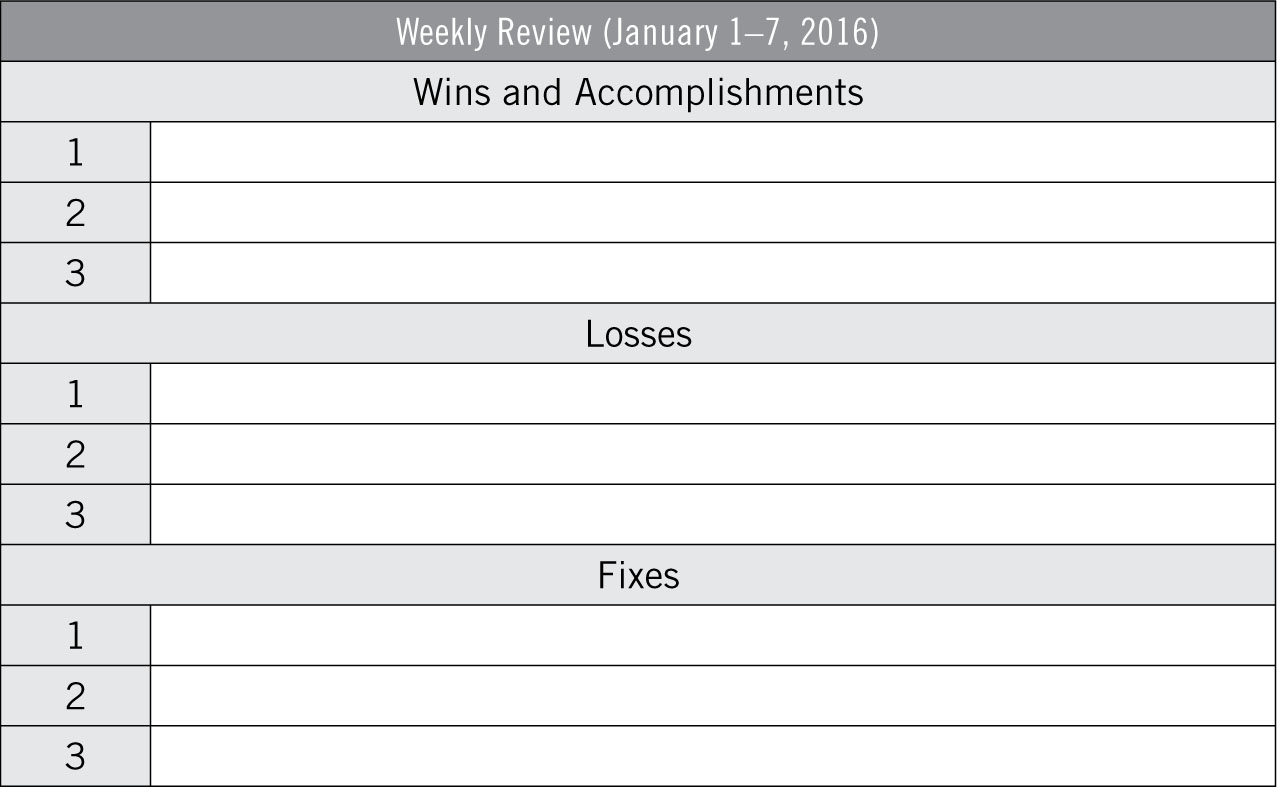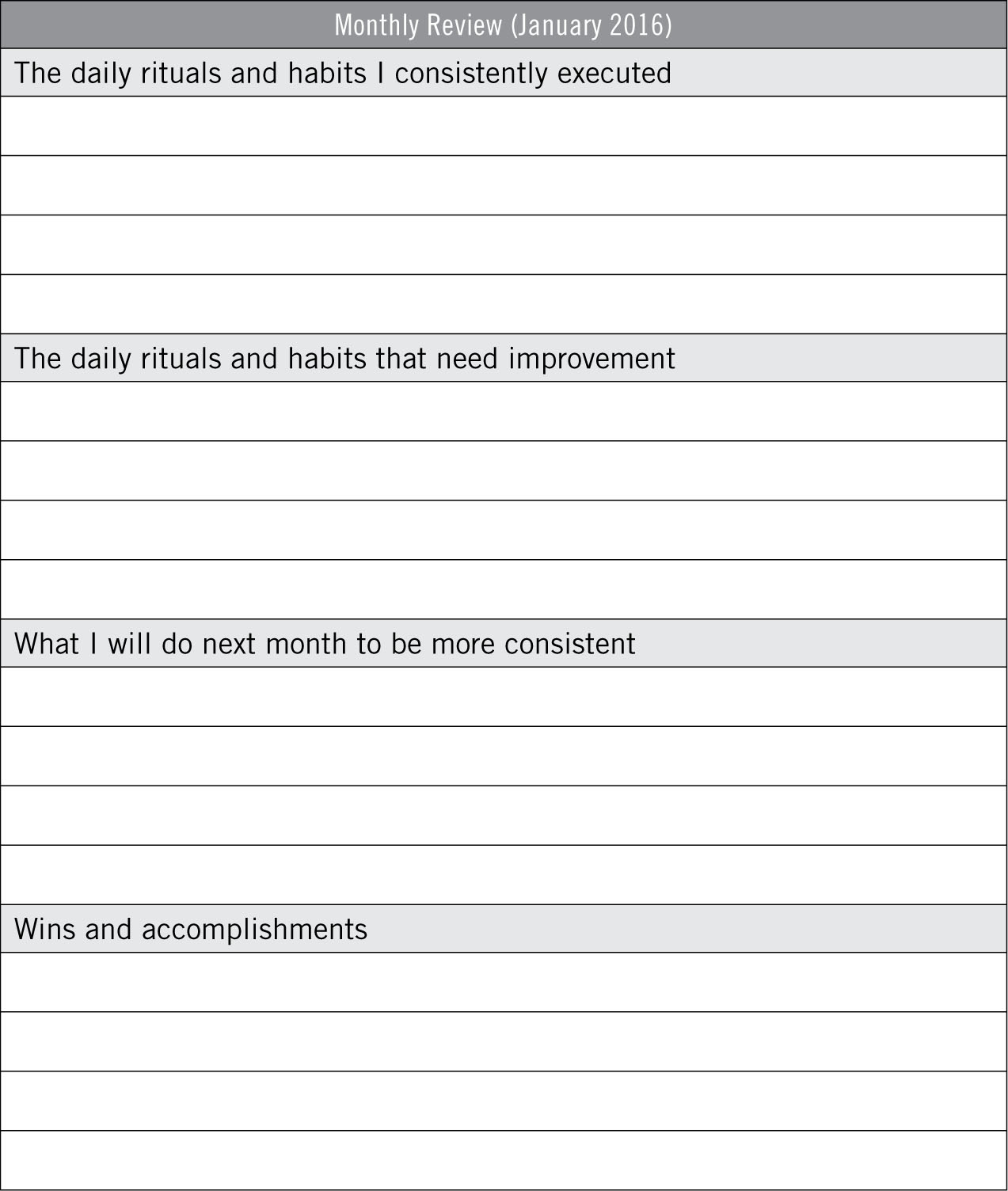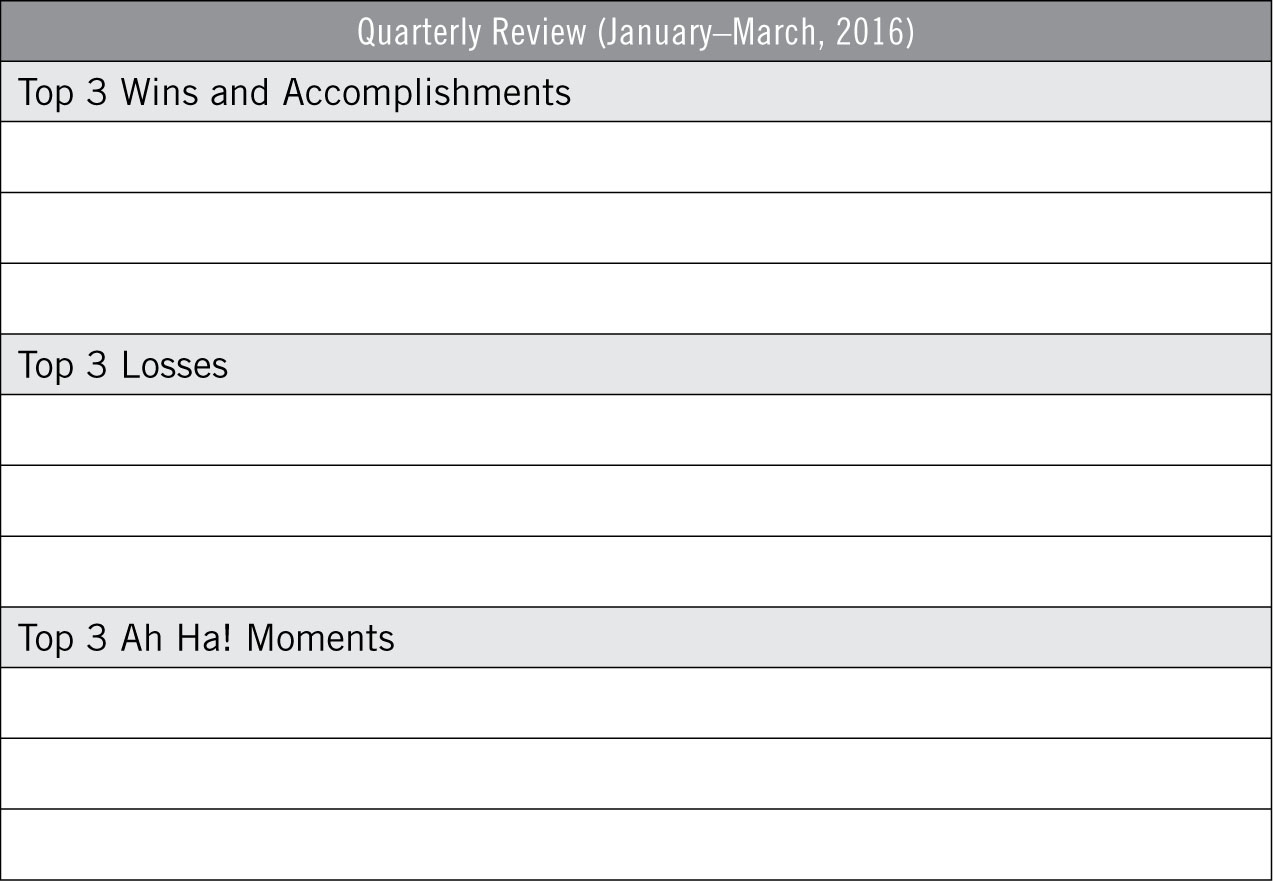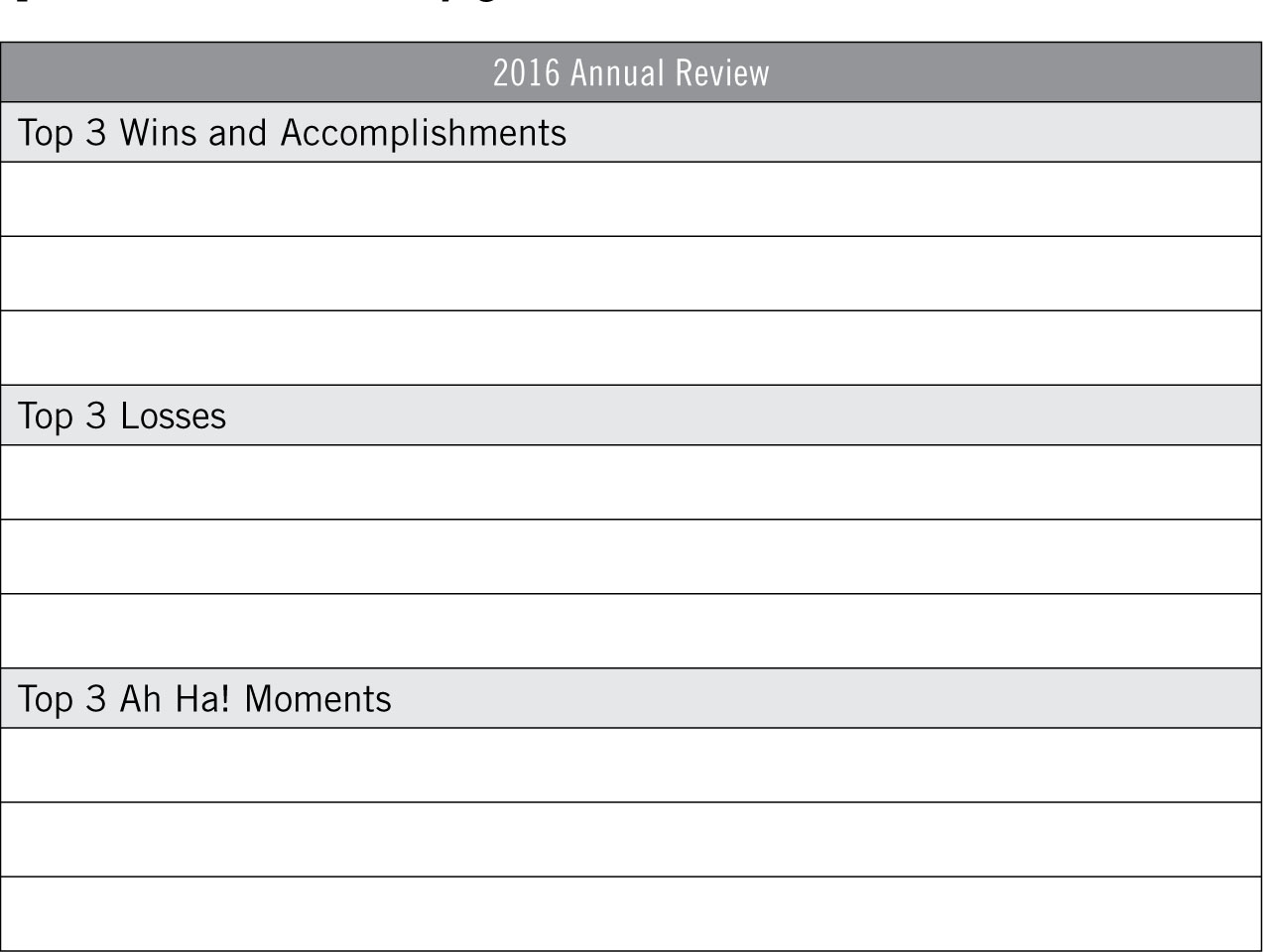How to Monitor, Measure, and Manage Your Ambitious Life
Unhappy people are not in control of their lives because they spend their days coping with the random bad results of unmanaged systems. Happy people are in control of their lives, spending their days enjoying the intentional good results of managed systems.
—Sam Carpenter, author of Work the System
I am confident that one of the only reasons I did well in school was because of the syllabus handed out on the first day of class. That magical document was the framework for every assignment, test, and scheduled activity for the entire semester.
One of my favorite college professors, Dr. Jeffrey Vittengl, was a master of the syllabus. His level of detail and clarity was unrivaled and it was nearly impossible to not do well in his class unless you literally did nothing.
Don’t get me wrong, his classes were not easy—but the expectations were crystal clear. There was no ambiguity or confusion; there were no contradictions. He had a keen ability to map out how each step of the class would progress, and he would review the steps with each of us along the way.
With that kind of pristine plan in place and the benchmarks to keep every student on track, success was unavoidable. That’s an ideal scenario and it’s one you can duplicate with your own goals every quarter.
All you need is the right review systems to hold yourself accountable and to keep all of the moving parts flowing in the same direction.
STEP 6: TRACKING BOLD PROGRESS
The sixth step of The 5 AM Blueprint is tracking your progress. Once you discover how to dominate one day before breakfast, the key is then to be able to repeat that process over and over again without getting off track.
The review systems outlined in this chapter will show you how to monitor, measure, and maintain your amazing productivity for the long term.
The indispensable review systems that will keep your goals on schedule for completion include a daily review, weekly review, monthly review, quarterly review, and annual review. We will also discuss how to maintain the corresponding tracking documents and how to set up an effective meeting with an accountability partner to monitor your progress at each interval.

You have many options when it comes to tracking your daily tasks and accomplishments. I certainly recommend you maintain a task manager and a calendar system to know what to do and when, but it is also imperative that you can look back at the end of each day to see what actually got done.
When it comes to daily tracking, the best system for you is the one you will actually use. I will show you how to use the old school tracking document that works for me, but feel free to use any apps, spreadsheets, or effective methods like the Seinfeld Strategy.
Jerry Seinfeld, the comedian, is well known for a habit- forming method built around writing jokes every day. After his daily joke-writing session, he would mark a big red X on a physical paper calendar. His only goal was to mark an X every day and not break the streak. The simple motivation to keep the streak alive kept him returning day after day to write more jokes.
NOTE: I have been personally using and discussing the Seinfeld Strategy for years, but while conducting research for this book, I discovered that Seinfeld did not create this method and never actually used it himself. He loves receiving credit for its creation, though no one is quite sure who developed it.
Nonetheless, since the method is powerful and effective, it is still a great strategy to add to your productivity arsenal.
You can call this your Daily Rituals and Habits Tracker. This simple spreadsheet is a daily reminder of the core habits in your life that are aligned to your grandest goals.

Follow these steps to set up your own habits tracker:
1. Adjust this week’s date in the top left corner of the tracker. I recommend you duplicate this spreadsheet every week and keep track of your quarterly progress in one document.
2. Replace the habits in the left column with your core daily habits. Be very specific. Notice how I included the exact time to wake up, the number of minutes to meditate, and the precise amount of water to drink.
3. Update the “goal” column with the number of repetitions you plan to execute each week. Each habit can have a different weekly goal. Keep this number ambitious, yet realistic.
4. Choose a specific time each day to update your tracker with the number of repetitions you performed. Many people find it works best to update the tracker as part of their ideal evening routine.
At the end of each week, during your weekly review, you will have the chance to review your weekly progress and make adjustments for the upcoming week.
After intentionally planning your day and scheduling focused blocks of time for your grandest goals, completing a weekly review is the next most effective strategy that you cannot skip.
When you successfully complete a weekly review (even once), you will gain enormous clarity over your entire schedule, all of the tasks on your plate, the habits you care about, and the commitments you have made.

A weekly review is not complicated, and it should not require a large amount of your time, maybe one or two hours a week; however, the benefits are staggering.
Before I implemented a formal weekly review process, I was reasonably productive. I thought I knew what was going on most of the time and I stayed on track fairly well. After I began systematically reviewing my tasks, projects, events, goals, and commitments, I dramatically improved my output and focus.
The weekly review process forces you to ask simple but direct questions, schedule the tasks that matter more than any other, and make the necessary adjustments to continue pushing directly toward your end results.
Clear a few hours on your schedule once a week to complete the following steps. It can be done anytime, as long as it is consistent.
1. Review your ideal week template (page 62). Ensure that the framework for the big picture is intact and accurately represents your life right now.
2. Review the habits you included in your Daily Rituals and Habits Tracker. Add, remove, or modify your habits to keep them ambitious and aligned to your current goals.
3. Update your progress reports in your goals notebook (as discussed in Chapter 5, page 45). Write down what you accomplished last week and clearly note what your next actions will be for the upcoming week for each of your quarterly grand goals.
4. Complete your weekly review document (create your own, or download a copy of the example provided here from The 5 AM Studio at JeffSanders.com/studio). Answer each of the questions and take your time to reflect on the previous week.
5. Post your Top 3 Goals of the week somewhere you will see them often. I have a vision board hanging in my home office where I write out my weekly goals on a large Post-it note. This acts as a constant reminder to stay focused on what matters.
6. Schedule your Top 3 Goals in your task manager and calendar. This is when you will schedule your focused blocks of time for the week and use those blocks to work on your top weekly goals. Rearrange your other commitments around these blocks.
7. Review all of your upcoming tasks, events, projects, and commitments for the next few weeks. The more time you spend planning, the less time you waste in execution. Review as much as you need to in order to feel confident about your calendar. If you are at all unsure about your schedule, go back and plan some more.
For my own weekly review, I created a recurring task in my task manager that lists each of these steps in a checklist format. Every Sunday night I go through the checklist and complete each step just in time for my Monday morning accountability call.
WEEKLY ACCOUNTABILITY MEETINGS
My friend Matt Frazier runs an amazing website called No Meat Athlete (NoMeatAthlete.com). For years I followed him online and after I had the opportunity to interview him for my podcast, he invited me to be his accountability partner.
Up until that time I had never worked with someone one-on-one for the sole reason of holding each other accountable to our own goals. After a few weeks of customizing how we wanted to structure this working relationship, we had a great thing going.
Accountability sounds like something that happens to irresponsible people who do bad things. Even the phase, “being held accountable,” implies that you cannot manage your own responsibilities and a third party has to come in and force you to do your work.
What I discovered with Matt was quite the opposite. Accountability has everything to do with exerting a little outside pressure to keep you on your toes. It’s not about being guilted into doing your work, but rather having the opportunity to discuss your progress with a close friend.
I will admit that knowing I will be discussing my progress with Matt on Monday provides great motivation to complete any unfinished work on Sunday.
Matt lives in Asheville, North Carolina, and I live in Nashville, Tennessee, so every Monday morning we host a 30-minute video chat through Skype. During that time, we review quite a few topics. Here’s the breakdown of our typical weekly accountability meeting.
Wins and accomplishments. What three things went really well last week? What are you proud of? Did anything new and surprising happen?
Losses. What did not go well? Where did you drop the ball? What goals did you fail to achieve?
Fixes. How will you correct the problems from last week? Specifically, what do you plan to do this week to make sure the problems do not return?
Ah ha! moments: What brilliant insights did you come across? What new ideas are you excited about? Did you find anything inspirational or reflective while reading, attending a seminar, or talking to a friend?
Goals for the week. What are your top three goals for next week? What are you willing to commit to achieving?
Personal development materials. How will you enrich yourself this week? What books are you reading? What workshops are you attending? What audio programs, podcasts, or audio books will you be listening to?
Skills to practice. How will you get better at what you do? What skill sets are you sharpening? What new skills will you be developing?
Technically, you don’t need an accountability partner. After all, you could simply complete your weekly review process alone and accomplish the same amount of work. However, I highly recommend you find someone in a similar season of life to share your goals with each week.
It is a surprisingly wonderful experience to have the chance to bounce ideas off one another, and you will likely make more progress as a team than you ever would on your own.
Another key teamwork strategy is to surround yourself with brilliant individuals in a mastermind group. This is a surefire way to achieve success faster and on a bigger scale than you could have reached on your own. Mastermind groups are phenomenal excuses for getting together with a bunch of smart, ambitious, and helpful people who all want to help each other succeed.
My experience with mastermind groups has proven that we are all better off together than on our own. Find a group or create your own. Just make it a priority to meet regularly with people who support you and your grandest goals.
Each month marks the end of one third of a quarter, which makes it a logical place to pause and review your progress thus far. The monthly review process is very similar to the weekly review, but with slightly different questions to appeal to the bigger picture.

Follow these steps to complete your monthly review process:
1. Review your habits from the Daily Rituals and Habits Tracker (page 81). Which habits did you consistently execute throughout the month? What worked well for you? What habits were the most inconsistent? What prevented you from staying consistent with these habits?
2. Review your progress reports in your goals notebook. Are you on track to complete this goal by the end of the quarter? If necessary, what changes need to be made to get back on track?
3. Complete your monthly review document (create your own, or download a copy of the example provided here from The 5 AM Studio at JeffSanders.com/studio). It helps to refer to your previously completed weekly review documents to answer each question.
4. Choose three goals to be your top three for the next month. These will likely be the three most important tasks from your current quarterly goals.
5. Review all of your upcoming tasks, events, projects, and commitments for the next month. Make note of any major obstacles coming up, including travel, conferences, parties, meetings, or other major events that could derail your normal schedule.
Hold on to your Monthly Review documents. You will need each of them to complete your quarterly reviews.
The quarterly review marks the end of a major milestone. Ideally, at this point you would have successfully completed the grand goals you began at the beginning of the quarter.
During the review, you will reflect back and see if your grand vision held true for the last 90 days. If not, you have your work cut out for you next quarter.

Follow these steps to complete your quarterly review process:
1. Update your habits from the Daily Rituals and Habits Tracker. These habits should have reflected your goals from the previous quarter and now they may need an update to reflect your goals for the next quarter.
2. Complete your progress reports in your goals notebook. Ideally, at this point you will be wrapping up your grandest goals for the quarter and reflecting back on the progress you made.
3. Complete your quarterly review document (create your own or download a copy of the example provided here from The 5 AM Studio at JeffSanders.com/studio). It helps to refer to your previously completed monthly review documents to answer each question.
4. Choose the grandest goals you will be pursuing in the next quarter. Also, create your new plan for each goal in your digital notebook (Evernote) and then set up the respective next actions list (page 45) and progress reports.
5. Review all of your upcoming tasks, events, projects, and commitments for the next quarter. Plan ahead now for all of the focused blocks of time you will need for this quarter’s grandest goals.
The end of a quarter is a great time for a break or even an offsite visit to a cabin in the woods. Planning your life requires solitude and focus. Take the time you need and plan well.
Assuming you have adopted the Quarter System and completed thorough quarterly reviews for the last four quarters, you might assume that you really don’t need to do an annual review.
However, I have found it to be very valuable to look back at the big picture of my life over the last few quarters to see how my goals have turned out.

Here are a few questions to answer once every 12 months:
1. What were your most consistent habits last year? What lessons can you glean from those successes to help form the habits that never quite stuck?
2. What major milestones did you reach last year? What grand goals were accomplished? How much better is your life now than it was one year ago today?
3. How well does the Quarter System work for you? Should your goals be scheduled on a different timeframe, like 60 days instead of 90, or 6 months instead of 3?
4. Complete your annual review document (complete your own or download a copy of the example provided here from The 5 AM Studio at JeffSanders.com/studio). It helps to refer to your previously completed quarterly review documents to answer each question.
5. Revisit your grandest goals list and start fresh. In an ideal world, what ridiculous, amazing, and mind-blowing adventures would you embark on?
As cliché as it is, the end of a calendar year is a great time to pause, reflect, and plan to begin again. Take the time to process the practical changes that will make a real difference in the near future.
KILL THE SNOOZE BUTTON
Pitfalls, Mistakes, and Problems to Avoid
Know when to ditch your own goals.
When an opportunity appears out of nowhere, how do you know if you should take it?
The more ambitious, productive, and high-achieving you are, the more likely you will find yourself with opportunities you never saw coming. I never expected to write this book. I was presented with the chance to do so out of the blue.
When I was contacted by my publisher with an offer to write the book, I was in the middle of two big business projects and in the beginning stages of buying my first house.
I was busy.
What made this decision easy was the clarity I had around my quarterly goals at the time. Because I had spent each and every week reviewing my projects, I knew where I stood. I knew the progress I had made, what tasks were coming up next, and how those tasks stacked up against my plans for the next few months.
In other words, I had been working hard on increasing my own self-awareness around my grandest goals, current projects, and ever-changing schedule. So, when I compared writing a book with my schedule at the time, the choice was clear.
It’s not always that easy to make those kinds of decisions. However, the more you know about where you stand with your current goals, the easier it is to know when it’s time to ditch them for something even better.
QUICK REVIEW: TRACKING BOLD PROGRESS
1. You are responsible for tracking your own goals and staying focused on what matters most. With the right review systems in place, this can be a breeze.
2. The weekly review process is the most important tracking tool. It is your chance to pause, get a big-picture perspective on your progress, and then dive back in with a clear plan for the next seven days.
3. A great accountability partner can make the difference between following through on your goals and letting yourself off the hook. Finding someone you trust to discuss your life with provides a phenomenal opportunity to stay true to your plan and not veer too far off course.
1. Update your Daily Rituals and Habits Tracker each day.
Time each day that you will update your Daily Rituals and Habits Tracker:
![]()
2. Brainstorm two or three people who could become your accountability partner. Then, plan to meet with each one to determine if the two of you would make a good fit.
People you will meet with to discuss creating an accountability partnership:
![]()
![]()
![]()
3. Create or download and then complete the templates for your daily, weekly, monthly, quarterly, and annual reviews. Schedule time on your calendar every week for the review. Friday afternoons and Sunday evenings are the most popular times. If possible, meet with your accountability partner soon after you finish your review each week.
Weekly day and time you will complete your weekly review (usually takes 1 to 2 hours):
![]()
Weekly day and time you will meet with your accountability partner:
![]()
During your weekly review, you will complete the following:
1) __________________________________________________
2) __________________________________________________
3) __________________________________________________
4) __________________________________________________
5) __________________________________________________
During your weekly meeting with your accountability partner, you will discuss:
1) __________________________________________________
2) __________________________________________________
3) __________________________________________________
4) __________________________________________________
5) __________________________________________________
During your monthly review, you will complete the following:
1) __________________________________________________
2) __________________________________________________
3) __________________________________________________
4) __________________________________________________
5) __________________________________________________
During your quarterly review, you will complete the following:
1) __________________________________________________
2) __________________________________________________
3) __________________________________________________
4) __________________________________________________
5) __________________________________________________
During your annual review, you will complete the following:
1) __________________________________________________
2) __________________________________________________
3) __________________________________________________
4) __________________________________________________
5) __________________________________________________